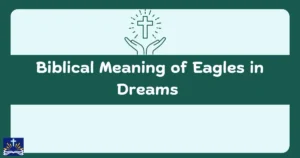Unraveling the connections between the Bible and ancient religious myths sheds light on its unique narrative.
Throughout history, the Bible has been a cornerstone of faith for billions. However, questions often arise about whether its stories were influenced by or directly borrowed from other ancient myths and religious legends. Many parallels exist between biblical accounts and ancient narratives, sparking debates about their originality and authenticity. These questions are not new but continue to capture the curiosity of scholars, believers, and skeptics alike.
This curiosity stems from stories like the flood narrative, the creation account, or epic battles between good and evil. Are these uniquely biblical, or do they reflect shared traditions and historical exchanges? Understanding these influences doesn’t diminish the Bible but adds depth to its narrative and historical context, prompting deeper discussions.
By delving into this topic, we will compare the Bible’s stories to myths from Sumerian, Egyptian, and Greek sources. We will also highlight the Bible’s unique attributes, examine its historical reliability, and explore what sets it apart from other religious texts. Let’s take an objective look at the evidence and uncover the fascinating interplay between ancient traditions.
The Popular Perception: Did the Bible Copy Other Religious Myths and Legends?
A common perception is that the Bible’s stories were borrowed or adapted from older myths, such as those from Mesopotamian or Egyptian cultures. Critics often cite similarities, such as the creation story in Genesis and the Babylonian Enuma Elish, or Noah’s Flood and the Epic of Gilgamesh, as evidence of direct borrowing.
For example:
- Flood Stories: The Epic of Gilgamesh describes a massive flood sent by the gods, a tale predating the biblical flood narrative. Both stories feature a hero (Utnapishtim in Gilgamesh and Noah in the Bible) who is instructed to build an ark to save living beings.
- Creation Stories: In the Enuma Elish, the world is created from chaos, involving divine conflict. Genesis also starts with chaos (“the earth was formless and void”), yet it unfolds with an orderly creation process.
While the similarities are striking, many argue that they represent shared cultural memories or archetypes rather than direct copying.
The Logical and Narrative Fallacies of the Popular Perception
The claim that the Bible copied myths often rests on oversimplified comparisons, overlooking important differences in worldview and theological intent. Logical fallacies include:
- Chronological Fallacy: Assuming that older stories must have directly influenced later ones without evidence of a direct connection.

- Equating Parallels with Borrowing: Similar themes across cultures don’t necessarily mean one borrowed from the other.
Two Key Examples:
- The Flood Narrative: While both Noah’s story and Utnapishtim’s involve divine warning and survival, the motives differ. In Genesis, God’s purpose is moral judgment, while in Gilgamesh, the flood reflects the gods’ capricious nature.
- The Ten Commandments: Parallels are drawn with the Code of Hammurabi, but the Ten Commandments emphasize a covenantal relationship with God, unlike the legalistic focus of Hammurabi’s laws.
Bible Verses About Life: Reflecting on the Meaning
Archaeological Evidence: Stories from Babylon, Egypt, and Other Cultures
Archaeological discoveries have unearthed ancient texts that predate or parallel biblical stories. These findings provide valuable insights into the cultural and historical context of the Bible.
Two Examples:
- The Epic of Gilgamesh: Found in Nineveh’s ruins, this epic features themes of mortality and divine-human interaction. The parallels with the flood narrative sparked debates, but Gilgamesh’s mythological tone contrasts with Genesis’s theological purpose.
- Egyptian Cosmology: Ancient Egyptian texts like the Pyramid Texts describe creation, death, and the afterlife. However, their polytheistic framework starkly contrasts with the Bible’s monotheism.
These discoveries suggest the Bible emerged within a rich tapestry of cultural exchanges but retains distinct theological aims.
The Bible’s Unique Stories: Myths, Stories, and Parables
The Bible’s narratives stand apart due to their emphasis on divine purpose, moral instruction, and human accountability. Unlike many myths, biblical stories often reject the fantastical in favor of relatable, spiritual truths.
Two Examples:
- The Exodus: The story of Israel’s deliverance from Egypt lacks parallels in ancient myths. Its focus on divine liberation, covenant, and moral law is unique.
- The Prodigal Son: Unlike mythological tales, this parable conveys deep spiritual truths about forgiveness and redemption through a simple human story.
These elements highlight the Bible’s ability to address universal human experiences with profound spiritual insight.
Comparison with Sumerian Stories and Greek Mythology
Ancient cultures like the Sumerians and Greeks had rich mythologies that share some thematic similarities with the Bible.
Two Examples:
- Sumerian Kings List and Genesis Genealogies: The Sumerians recorded impossibly long lifespans for their kings. While Genesis also lists long lifespans, its focus is on lineage leading to redemption.

- Greek Creation Myths: In Hesiod’s Theogony, gods battle for supremacy. Genesis avoids divine conflict, presenting a sovereign God who creates with order and intention.
The Bible’s monotheistic framework and moral clarity contrast sharply with the polytheistic and often chaotic narratives of these mythologies.
What Makes the Bible Unique from Other Religious Books?
The Bible differs from other religious texts in its historical grounding, narrative cohesion, and spiritual depth.
Two Examples:
- Historical Accuracy: Unlike purely mythological texts, the Bible often aligns with historical events and locations, as confirmed by archaeology.
- Messianic Prophecy: No other religious text contains the detailed prophecies of a coming savior, fulfilled in the New Testament.
Its focus on a consistent narrative of redemption across centuries sets it apart.
Exploring the Shortest Book in the Bible
The shortest book in the Bible, Obadiah, offers a powerful message in just 21 verses.
Two Key Themes:
- Judgment on Edom: The book condemns Edom for its arrogance and cruelty.
- Hope for Israel: It concludes with a vision of God’s kingdom and restoration for His people.
Despite its brevity, Obadiah delivers profound insights into divine justice and sovereignty.
Does the Bible Reflect Shared Cultural Memory or Divine Revelation?
The similarities between the Bible and other ancient myths suggest shared cultural memories of significant events, like a flood. However, the Bible’s theological focus and moral depth point to divine revelation rather than mere cultural borrowing.
Answer: While the Bible exists within a historical and cultural context, its unique worldview, consistent narrative, and transformative impact reflect a divine origin. This distinction is what inspires its enduring relevance.
Key Insight
1. Why do biblical stories resemble other myths?
Similarities may arise from shared cultural memories, but the Bible’s intent and theology distinguish it from other myths.
2. Is there archaeological evidence supporting the Bible?
Yes, discoveries like the Dead Sea Scrolls and ancient city ruins confirm many historical aspects of the Bible.
3. Are biblical stories purely symbolic?
While some stories include symbolism, many are rooted in historical events and convey deeper spiritual truths.
4. How does the Bible address other myths?
The Bible often contrasts with myths, emphasizing monotheism and moral accountability over polytheistic narratives.
5. What makes the Bible reliable?
The Bible’s historical accuracy, fulfilled prophecies, and cohesive narrative over centuries enhance its reliability.
Conclusion
The question of whether the Bible copied other religious myths is complex yet fascinating. While similarities exist, they often reflect shared human experiences or archetypes rather than direct borrowing.
The Bible’s unique theological focus, moral clarity, and historical foundation set it apart from other texts. Exploring these connections enhances our appreciation of the Bible’s profound depth and enduring influence, inspiring readers to engage with its timeless wisdom.

Hi! I’m Lauren Reynolds, a creative spirit and lifestyle blogger dedicated to inspiring others through thoughtful reflections and innovative ideas.










